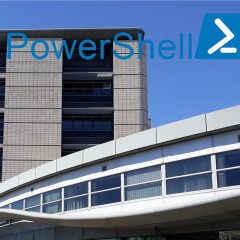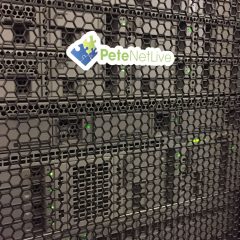Exchange 2013 to 2019 Upgrade
Exchange 2013 to 2019 Upgrade KB ID 0001808 Exchange 2013 to 2019 Upgrade With Exchange 2013 going end of support (11 Apr 2023) you should be migrating away from it as soon as you can, (as it’s only supported on up to Server 2012 R2), so you should have migrated off it already! It’s been some time since Exchange had any ‘major’ redesigns, 2013 was version 15, 2016 was version 15.1, and 2019 is Version 15.2. So...
Exchange 2019 / 2016 Manage Remotely via PowerShell
KB ID 0001465 Problem Since Exchange 2013 we have been able to manage Exchange remotely through the Exchange Admin Center, but what if you want to use the Exchange Management Shell remotely? Install Exchange Management Tools This is not just the Management Shell, this will also install the Toolbox and additional help. There are few prerequisites, but to install from a normal PowerShell prompt; Enable-WindowsOptionalFeature -Online...
How To Install Exchange 2016 (Greenfield Site) – Part 1
KB ID 0001301 Problem As the title implies, this article assumes you do not already have Exchange of any flavour in your organisation. If you do and you simply want to migrate to Exchange 2016, then this is NOT the article you want, instead head to the following link; Migration From Exchange 2010/2007 to Exchange 2016 (& 2013) Solution Now before you sit at the keyboard there are a few things to consider; Media: At the time of...
Install SCCM 2007 on Windows Server 2008 R2 – Step by Step
KB ID 0000297 Problem I had to work out how to do this for a client, and as is my modus operandi, I’ll try and save you some of the pain I endured, Products Used System Center Configuration Manager 2007 SP2 Windows Server 2008 R2 SQL 2008 R2 (At time of writing neither officially supported or not supported on SCCM) Note: I was originally going to use SQL 2005 – hence the reason the SQL servers name is SCCM-SQL2005, however...
Install and Configure Microsoft Lync 2010
KB ID 0000522 Problem A few weeks ago my boss asked me to take a look at Microsoft Lync. Because he was interested in the Lync Client (formally Microsoft Communicator) for instant messaging. Decent info is a bit thin on the net, and I don’t have the patience to read stupidly long PDF files. So to redress the balance I thought I would publish my findings below. Solution Note: The following procedure is carried out on Server 2008...





